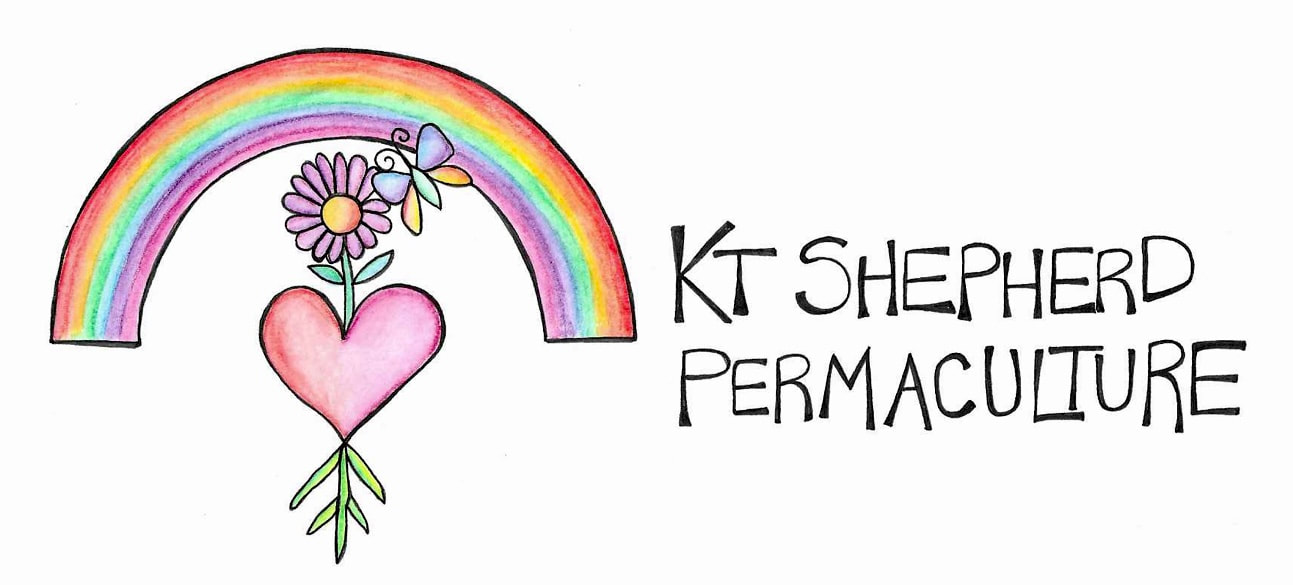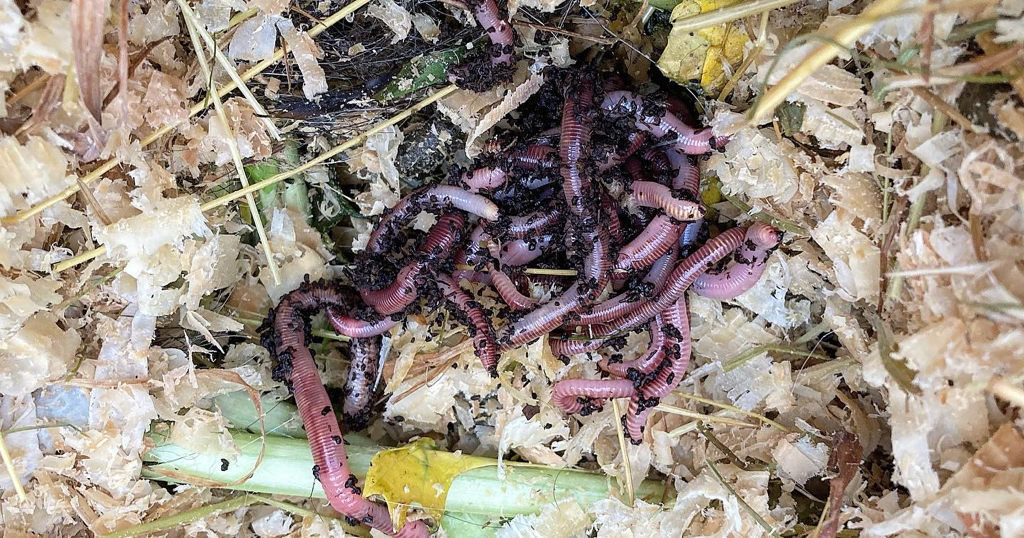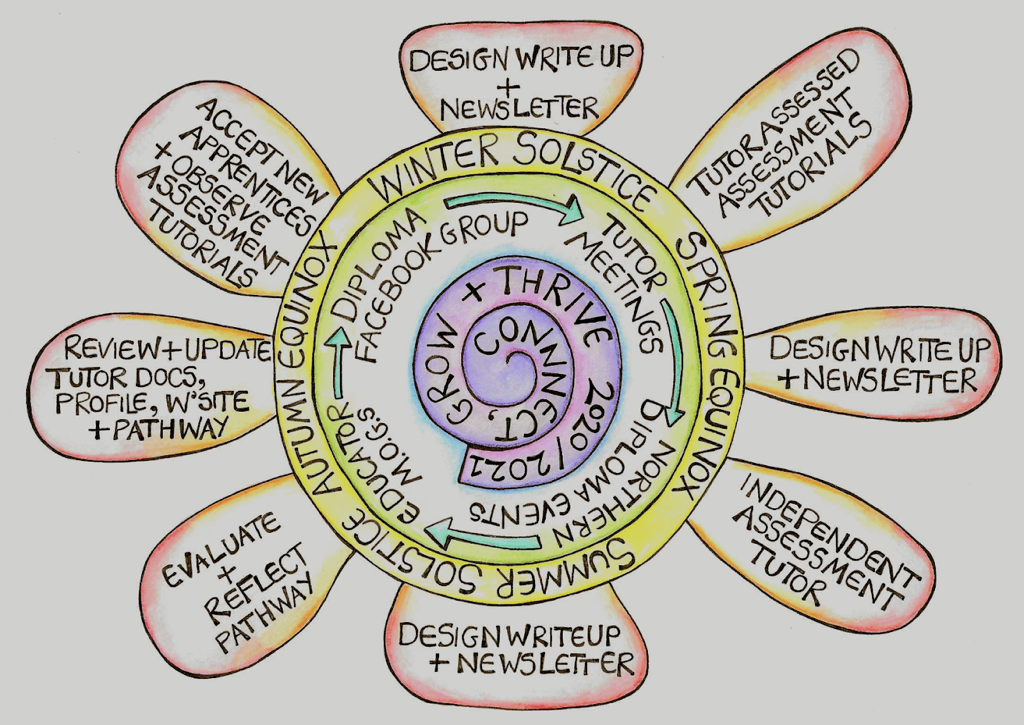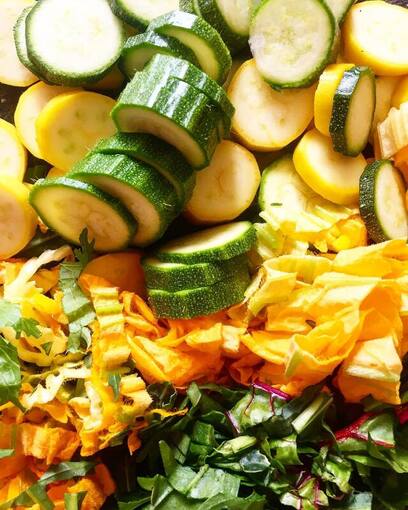|
Creative Dying - Resources and tools for designing our own death and dying is one of the designs in my portfolio for my Diploma in Applied Permaculture Design. I started this design in 2013 and it’s had several incremental changes over the years since. You can read more about Creative Dying and how permaculture can improve how we die, in a previous article I wrote here . The online resource I created then has now being archived and I’m currently in the process of designing the next steps of the project. Triggered by several major life changing events, including serious illness, I have recently been updating my When I Die plan, which was part of the initial Creative Dying design. I’ve not explicitly named the permaculture principles used throughout my plan, but see how many you can identify as you read through. Could the same principles help to shape your own Creative Dying related design? (The information shared in this blog relates to death, dying and bereavement in the UK) The functions of my When I Die planThe functions of my When I Die plan are
When I Die - Three SectionsMy When I Die plan consists of three sections
The Before I die and As I die sections of my plan contain personal information that isn’t appropriate to share in this blog, but the information can be categorised under the following headings -
Through both my work as a palliative care nurse and as a Carer for various family members, I am aware of some of the difficulties in meeting the wants and expectations of a person approaching the end of their life. These include -
Not being able to meet the exact expectations of a person who is dying can be a significant burden for friends and family which can in turn impact on their bereavement. So including various options in an advanced care plan can be really useful for everyone concerned. The third section of my When I Die plan, After I die, is typically the aspect of dying that most people planning for their death, focus on. It’s something which I am very happy to share the main elements here -
The final resting place for my bodyMy first choice for the placement of my body after my death, if available in the UK or other country where I die, is to be composted. Recompose are an amazing organisation founded by Katrina Spade, a permaculture designer and architect, in the US, who are pioneering the composting of human bodies. It’s a process that is already legal in several states and one if the aims of Recompose is to enable organisations in other countries to create similar systems. If human body composting is not not possible, including because of the wellbeing of people close to me, then I would like to be buried in a woodland burial site nearest to the address where I am living when I die. Ideally I would like to be buried in this blanket that I have made from felted knitted squares of natural coloured wool, (wool which is produced and sold directly from small farms in the UK). If burial in my blanket is not possible, including because of the wellbeing of people close to me, then I would like to be buried in the coffin I have already designed and purchased. This is in use as a book shelves and (the lid) as a notice board in my house. If I die outside the UK then I would like my body to be treated and placed as local custom, with my ideal choice always being burial. I would not want my body to be transported back to the UK. Celebration of life and saying goodbyeI have no fixed ideas or needs for those around me to celebrate my life and say goodbye after I die. Here is a list of some ideas I have that might assist people close to me involved in my after death care -
I have listed friends who are celebrants of various kinds and might be available to facilitate an event Legal aspects of my When I Die planA really important part of the update of my When I Die plan has been getting some of the legal aspects of the project completed. I got both Lasting Power of Attorney, Health and Welfare and Property and Financial Affairs, documents arranged, meaning that a close friend of mine can act on my behalf if I am too unwell to make decisions for myself and my own needs known. At the same time, with the same local solicitor, I wrote my Will which means that when I die my wishes for any belongings and/or financial assets that I own will be carried out. These documents took a bit longer to process than anticipated as they had just got into the legal system as the first lockdown for the COVID 19 pandemic commenced in the UK. However, they are complete now and the details in them will be honoured for the rest of my life. I can also change the content of any of these documents at any time, should I want too. A copy of my When I Die plan, while not legally binding, also sits with the Power Of Attorney documents and Will, both with my solicitor and in my paperwork at home. Two close friends have also got a copy of my When I Die document. Useful ResourcesThese books are some of my current favourite resources for making plans for dying. The following list is a selection of my current favourite online resources - Dying Matters Life. Death. Whatever The Digital Legacy Association The Good Grief Project End Of Life Care - LGBTQ Route To Success - Macmillan Cancer Support Anti-Racism: The Outer and Inner Work - End Of Life University Podcast How To Have An Environmentally Responsible Death - Marie Curie https://www.gov.uk/power-of-attorney A Greener Way To Go, What’s The Most Eco Friendly Way To Dispose Of A Body - The Guardian Eco Friendly Funerals - Green Eco Friend The Natural Death Centre FinallyWhether for your own death plan, or someone close to you, I hope its been useful to read about my own When I Die plan. I have other other new elements of Creative Dying planned over the next few months, sign up to my monthly newsletter to access them when available.
2 Comments
It’s been such a pleasure to help behind the scenes with the creation of Twigs “the magazine for young planet protectors” by Twigs’ creator, my lovely talented friend Clare Carney . The first edition is now available to buy via the Twigs Website where you can also find out how permaculture ethics and principles have been used in the design of this beautiful project. “Twigs is aimed at children aged 4 years and upwards and will help children and families connect with nature, and through compassion and love, help them create a sustainable and positive future.” Twigs includes -
Book ReviewI’ve been really looking forward to reading this inspiring sounding new book from permaculture focused garden designer and educator, Anna Locke. And it hasn’t disappointed.
Anna has taken the concept of forest gardening and created a beautiful, engaging resource to teach and empower us to design perennial based foraging gardens where humans and non-human beings in nature can flourish. Her decades of knowledge and experience of connecting people with natural environment through garden design shines through every chapter of this very accessible book. The Forager’s Garden takes us through a simple design process to grow ecological, wildlife abundant gardens. It’s a book about planting whole ecosystems on any scale, for community, private and guerrilla gardening projects. Anna’s work isn’t designed to compete with traditional vegetable and fruit growing but to compliment it. Yes, we could redesign whole gardens or community plots as foraging ones, but equally, creating small perennial plant spaces in gardens with annual edible or flower growing areas too, can also develop conditions for nature, (including humans), to thrive. With clear, jargon free text, gorgeous illustrations, diagrams and photos alongside regular prompts for applying the information presented in each chapter to our own garden design, this book will suit gardening novices alongside those of us who like to learn and learn again especially from new authors and artists. The Forager’s Garden leans to a focus on UK climate and includes chapters on; Defining what a foraging garden is; Designing for resilience and long term; How to plan your garden; Information for beginner gardeners; The benefits of including diversity in the different elements of garden creation; The use of trees in a forager’s garden; Embracing the use of plant guilds; The creation of ecological stability and abundance through creating multiple layers in a garden; Plant choices, Implementing and maintaining your garden design; How perennial focused foraging gardens or spaces in gardens, can be used in different spaces, for example, allotments, container gardening and gardening undercover or on windowsills. The book also contains an excellent “Plant finder” with lots of clear information about many common and some less so, plants that can be used to create a beautiful, successful garden space to forage from. Anna skilfully weaves ecological principles throughout the abundance of knowledge, ideas and personal garden design experiences in her book. People with some prior understanding of permaculture will also recognise the permaculture ethics or values of Earth Care, Fair Shares and People Care at the core of The Forager’s Garden. The chapters skilfully link low budget, low maintenance, edible garden design to the bigger pictures around food security, wildlife habitat regeneration and community building Though many of the garden design stories in The Forager’s Garden span over several years, Anna wrote this book against the backdrop of the last 18 months when both increasing public awareness and motivation about the urgent need to address climate change and the surge in numbers of people who started growing their own food for the first time as the COVID 19 pandemic became realities in our communities. It’s timely publication will be an important tool to use in individual household and community scale projects, as part of wide scale solutions focus for both of these global scale truths. I wholeheartedly recommend The Forager’s Garden for us all. The Forager’s Garden by Anna Locke is available from Permaculture Market I haven’t blogged about my urban permaculture garden design since last November , (you can read more about why, in my blog post “Website Design Update - Catching Up” from a few days ago). So much has changed in my edible garden over the winter months as I implemented the permanent structural part of the garden design. 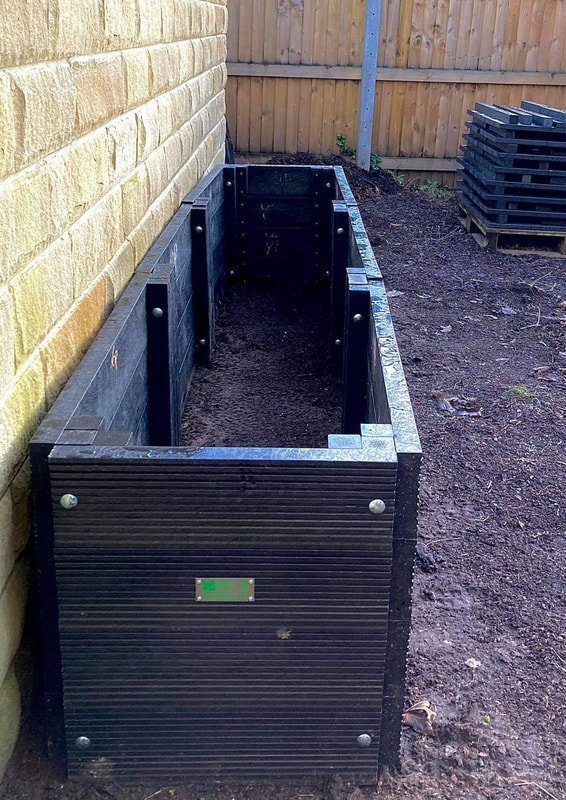 The raised bed along the south facing stone wall was the first one to be constructed. These amazing raised bed kits from British Recycled Plastic in Hebden Bridge (about 45 mins drive away from my house), come in a variety of different sizes and depths. The material is made from British plastic waste and will basically last forever. I chose the 60cm depth option as its great for seated gardening. Over the the winter and spring I have also been implementing the next part of the design for the wildlife habitat area of my garden. I planted 70 diverse trees as part of a mixed hedgerow as in my November 2020 garden blog and planted out a mixed range of perennial herbaceous ground cover plants suitable for a North facing slope, supplied by the wonderful Those Plant People permaculture plant nursery just 5 miles up the Aire valley from my house.  Earlier this month I added a mix of annual and perennial wild flowers and grasses mix to the exposed patches of soil (created by leaving fallen sycamore leaves as a mulch over the winter). This is the second year of doing this, I will also repeat the process in the autumn. Creating a diverse “meadow”/woodland edge in newly laid lawn is a gradual process over a number of years, but should eventually result in a space where many insects and birds can thrive. I’m returning to my monthly garden update blogs now, so feel free to sign up to my
Full Moon newsletter or connect in my social media spaces to get notified when they are published. Apologies. I’ve definitely been a bit A.W.O.L. In recent months, both from my blog and Full Moon newsletters. At the end of last year I outgrew my marketing package from Weebly, my website host and decided that while I upgraded I would take the opportunity to give my website a much needed update too. Living with a chronic illness means that unplanned times of rest are often a thing and none essential activities can get delayed in a big way, which is what happened with me. However, here I am again with my website updated, a new blog/newsletter design underway and some great plans for my online spaces over the next few months. Here is a little overview of what you can find on my website now: - About Me and My WorkAn overview of my different Permaculture Educator projects: - Permaculture Illustrations, Blog, Permaculture Diploma Tutoring, Accessing Permaculture, Permaculture Resources and Social Media Permaculture IllustrationsDetails about my Free To Use illustrations, examples of some of the recent commissions I have undertaken and a link to my Etsy shop where some of my older Illustrations are available as cards and prints. Over the next few weeks I will be opening a new shop for cards and prints of my illustrations on my website. Sign up to my full moon news letter and connect with my social media spaces for updates on this My BlogEveryday examples of how permaculture can provide healing and regeneration for ourselves, our communities and our planet. Permaculture Diploma TutoringInformation about my work as a tutor for the Permaculture Association (UK) Diploma in Applied Permaculture Design Accessing PermacultureSome resources designed to help and support improving access to Permaculture, (and other activism type work/events), for people with chronic illness and/or disability. ResourcesSome of my favourite permaculture related resources : - websites, blogs, podcasts, books and videos Keep Up To DateTo keep up to date with my various Permaculture Educator projects then sign up to my Full Moon newsletter and connect with my social media spaces
November has been all about preparing to start the implementation of my long term permaculture garden design. Rather than clearing the growing beds of my pop-up garden from this years growing season, I left the remaining plants in place, plus added a thick layer of fallen leaves from the lawn/wildlife meadow area of the garden. This means that until I am ready to work on a specific area, the soil fertility and insect habitat will be maintained as much as possible. Birds have also been very pleased with this decision and although Im not feeding birds from commercial feeders, I’m seeing an increased number spending time in my garden and finding food to eat from these mulched areas. I ordered a diverse mix of trees from the Woodland Trust to plant as a hedgerow at the edge between my garden and a busy main road. The area already has some young hawthorn and holly trees in place and I’m going to be adding hornbeam, wild cherry, blackthorn, dog rose, elder, rowan, alder, hazel and yew. I’m also awaiting a delivery from Yorkshire Willow - a variety of various coloured willow rods to create a mini coppice area. Two of my lovely friends put together this amazing shed from local, award winning Power Sheds in Bradford. They deliver anywhere in the UK and I can really recommend the quality of their product and customer service. I’m making a lot of compost in my garden and to give the process a boost I ordered some “tiger” worms from Yorkshire Worms. The basic layout of my garden is only a year old with a thin layer of top soil on top of a lot of building rubble, so I’m hoping that these new garden friends are going to greatly help with the land regeneration. (The wood chip in this photo is bedding from my rescue guinea pigs, another important part of my composting system.) And then lastly my raised gardening beds arrived from British Recyled Plastic, based down the road (and over the hill!) in Hebden Bridge. They create an amazing robust and chemically safe product from British farm waste plastic, to make garden beds and other outdoors furniture.
This year I’ve gradually been transitioning back into my role of being a tutor on the Diploma in Applied Permaculture Design. It’s work I haven’t been well enough to do over the past few years and I’m feeling really excited to be part of such a great programme and community again. Over the summer I spent time designing illustrations for the new Diploma website (designed and launched for the new 2020 system), which was a lovely creative way to start being connected. I then undertook the online training to became an assessment level tutor, meaning I can now work alongside apprentices through every stage of their Diploma journey. Through the training, several other Diploma tutors in the north of England and myself, decided to create a regional, day-long gathering for anyone involoved in the Diploma in the area, initially to be an online event, and then hopefully to be an “in person” event as the pandemic conditions allow. We hosted the first of these gatherings last week and it was a really motivating event. We opened the gathering up to any Diploma apprentices and tutors who wanted to attend, with the aim of sharing the design, to inspire others to create other regional events. About 40 people joined in sessions about; documenting designs, ‘getting unstuck’, a review of the assessment criteria, design shares and time/space for everyone to be able to introduce themselves. Our northern England tutor guild is just about to arrange our gathering evaluation online meet up but we are already pretty sure there will be more similar events to happen. I also facilitated my first tutorial in the new system last month and am looking forward to gradually accepting other apprentices over the next few months. You can check out my tutor profile on the Diploma in Applied Permaculture Design website and get to know more about me and my permaculture interests by having a general nosey round my own website. Please feel free to contact me if you have any questions about my tutor work. Back in spring I shared a blog post about a temporary edible garden I was designing as life in the the UK was being overwhelmed with the realities of the arrival of the COVID 19 pandemic . In this post I share some more photographs about how this temporary garden grew and thrived throughout the growing season of this surreal and uncertain year. As I write this at the 1st October Harvest Full Moon, I have been in my new home (and garden) for just over a year and making plans to finish this "pop up" garden and rejoin my bigger much longer term whole garden design again.
For many people the sudden arrival of the Coronavirus Pandemic has meant significant changes in how we live our lives. As the weeks pass it is becoming more evident that in the UK, as in many other places in the world that we will be living with some level of “lockdown” situation for many more months, possibly longer. From my own observations and listening to the stories of others, there are many similarities and parallels about life respecting the lockdown rules and managing the impacts of the overwhelming loss related to the pandemic, and my experience of being mainly housebound while living with long term illness over the last few years. In the early months of my diagnosis with late stage Lyme Disease I used aspects of permaculture design to create a life that, although very different from my life prior to becoming seriously unwell, I could continue to thrive in. I have now easily been able to adapt these ideas to both enhancing my own experience of lockdown and also supporting others around me to be able to adapt as well as possible. Here I share some of those ideas. ● I use The Design Web by Looby Macnamara from her book People and Permaculture (2012) to design the pattern of my days. I can really recommend spending some time on creating a template for this, which can then be used as the structure for each day to add detail to according to the different activities and priorities of each individual day. ● I spend time on a regular basis acknowledging the loss, grief and various emotional states associated with this, relating to how Covid 19 is impacting on our lives. Also how this can compound other loss in my life too. Gently accepting and reminding myself about the fact that fast changing sways of emotion are in fact grief and connecting with others about this can mean that the emotions don’t become overwhelming as often. ● Connection and integration with other people, (while physically distancing, but demonstrating social solidarity!) to support each other through the Pandemic, but just as importantly to focus and talk about other meaningful topics again to avoid being emotionally overwhelmed, is also a valuable tool. ● I use reflection a lot - a mini reflection at the end of each day, a more detailed one at the end of each week and then an in-depth time of reflection at each Earth festival. It really helps to have these periods of reflection with other people who know me well too, a bit like “life supervision”. Referring back to the daily pattern template above during the reflective time means that I can creatively make changes as needed on a regular basis. Regular reflection helps me to value my achievements however small, even on the most difficult days. Being able to identify potential for new projects or positive habits enables more flow and growth in my life too. ● Creating a journaling tool to record ideas, gratitude and event memories is a really positive strategy. The fast changing pace of the changes involved with the Coronavirus situation and the media responses, means that it can be difficult to focus on aspects of life not related to the crisis and this in turn can lead to feelings of being overwhelmed and potential burnout. Using the permaculture principle of catch and store energy, in making a physical space to record actions and thoughts really helps to focus on solutions and regenerative ways forward. ● I use the permaculture tool of Zoning to help to connect with the things in life which give me meaning, even though the ways I can do this are often very different from before. This means that I can decide on an activity based on any limitations that the effects of the Coronavirus lockdown are having on my life at any particular time. For example – one of my main projects on the go is the design and creation of a new edible garden. Zone 0 activity related to it is to have dedicated thinking/daydreaming/mind mapping time, Zone 1 to listen to a podcast or audiobook about edible gardening, Zone 2 to read a book or watch a video about edible gardening, Zone 3 to chat to a friend or on a forum about gardening, Zone 4 to actually spend some time on practical gardening activities and Zone 5 to visit other edible gardens/allotments in my local community. ● Over recent years there has been many studies demonstrating about how beneficial nature connection is to our physical, emotional and spiritual health. I designed ways in which I could connect with nature when my health was at its most difficult and I spent many months in bed. One of the most effective ways I maintained this essential part of my life was to create a space in my bedroom to display objects and other representations of patterns in nature. I wrote in more depth about this in this here . Although now, through significant improvements in my health, I have the privilege of being able to spend time in my garden and enjoy daily walks in my local park, I realise that not everyone has access to this either geographically and/or because of needing to self-isolate or shield because of Covid 19. Having an inside space dedicated to connection with nature, continues to be a constant vital aspect to my holistic wellbeing. ● Growing food is also something that gives me and many other permaculture practitioners really significant meaning in life – I’m really lucky to have the space and health to be able grow food in my garden now and as the Coronavirus lockdown commenced in March I started a design for my edible garden. Throughout the difficult times of my illness I was able to grow food on windowsills in the house – sprouted seeds and pulses, herbs and chilli plants – and I still do as these ways of growing give me fresh home grown food each day of the year which is hugely impactful to my holistic wellbeing. ● I timetable a regular space in each day to intentionally “pause” and take a break from whatever else is going on in the day. For me this means 10-15 minutes of grounding, through awareness of my senses and purposefully connecting to Earth – I also found this tool really useful to use at any time that feels overwhelming too. This short time away from whatever else is happening in my day nearly always enables me to regain a healthy sense of control and is helpful when changes are happening quickly, such has been the case with the Coronavirus crisis. These are some of the life tools, inspired by permaculture, I have been using and adapting over the past few years to stay as holistically healthy as possible. I hope that you have found some inspiration here in my ideas for your own self-care in these times of Covid 19. An edited version of this article also appears in Permaculture Magazine Autumn 2020 (No. 105) - If you have the financial means I can strongly recommend subscribing to this wonderful quarterly publication. As well as the magazine, Permaculture Magazine website has masses of free permaculture related content plus a wonderful YouTube channel
There is a lot of grief in our communities right now. Grief related to so many aspects of the Covid 19 crisis. Grief related to our damaged Earth. Grief relating to people close to us who are dying and who we can't be alongside. Anticipatory grief. Actual grief. Complex grief.
I made this colouring-in page about the web-like pattern and aspects of grief that often form in our lives. Please feel free to print off and colour in/doodle on. Click here for a PDF version to print from. If you want to read more about different types of grief and practical, creative ways of living with so much loss then I can recommend the blog at What's Your Grief as a good place to start. |
Welcome to my blog. Here I aim to share everyday examples of how permaculture can provide healing and regeneration for ourselves, our communities and our planet.
Search My BlogSign up for my monthly newsletter, Full Moon Flourish. Here I will be sharing updates about my creative permaculture projects, plus links to inspiring work from other women in permaculture.
Archives
May 2024
Categories
All
|
























